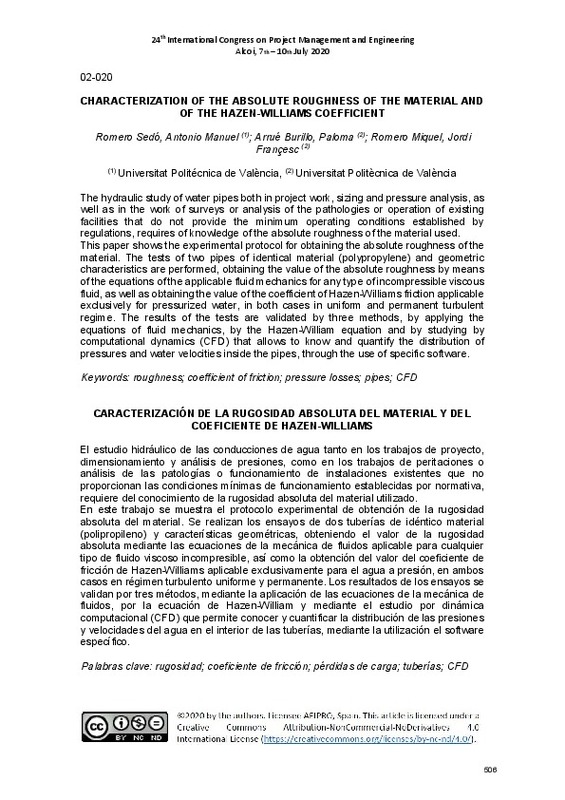JavaScript is disabled for your browser. Some features of this site may not work without it.
Buscar en RiuNet
Listar
Mi cuenta
Estadísticas
Ayuda RiuNet
Admin. UPV
Caracterización de la rugosidad absoluta del material y del Coeficiente De Hazen-Williams
Mostrar el registro completo del ítem
Romero-Sedo, A.; Arrue-Burillo, P.; Romero Miquel, JF. (2020). Caracterización de la rugosidad absoluta del material y del Coeficiente De Hazen-Williams. Asociación Española de Dirección e Ingeniería de Proyectos (AIEPRO). 506-518. http://hdl.handle.net/10251/179847
Por favor, use este identificador para citar o enlazar este ítem: http://hdl.handle.net/10251/179847
Ficheros en el ítem
Metadatos del ítem
| Título: | Caracterización de la rugosidad absoluta del material y del Coeficiente De Hazen-Williams | |
| Otro titulo: |
|
|
| Autor: | Romero Miquel, Jordi Françesc | |
| Entidad UPV: |
|
|
| Fecha difusión: |
|
|
| Resumen: |
[ES] El estudio hidráulico de las conducciones de agua tanto en los trabajos de proyecto,
dimensionamiento y análisis de presiones, como en los trabajos de peritaciones o
análisis de las patologías o funcionamiento de ...[+]
[EN] The hydraulic study of water pipes both in project work, sizing and pressure analysis, as
well as in the work of surveys or analysis of the pathologies or operation of existing
facilities that do not provide the minimum ...[+]
|
|
| Palabras clave: |
|
|
| Derechos de uso: | Reconocimiento - No comercial - Sin obra derivada (by-nc-nd) | |
| ISBN: |
|
|
| Fuente: |
|
|
| Editorial: |
|
|
| Versión del editor: | http://dspace.aeipro.com/xmlui/handle/123456789/2447 | |
| Título del congreso: |
|
|
| Lugar del congreso: |
|
|
| Fecha congreso: |
|
|
| Tipo: |
|







